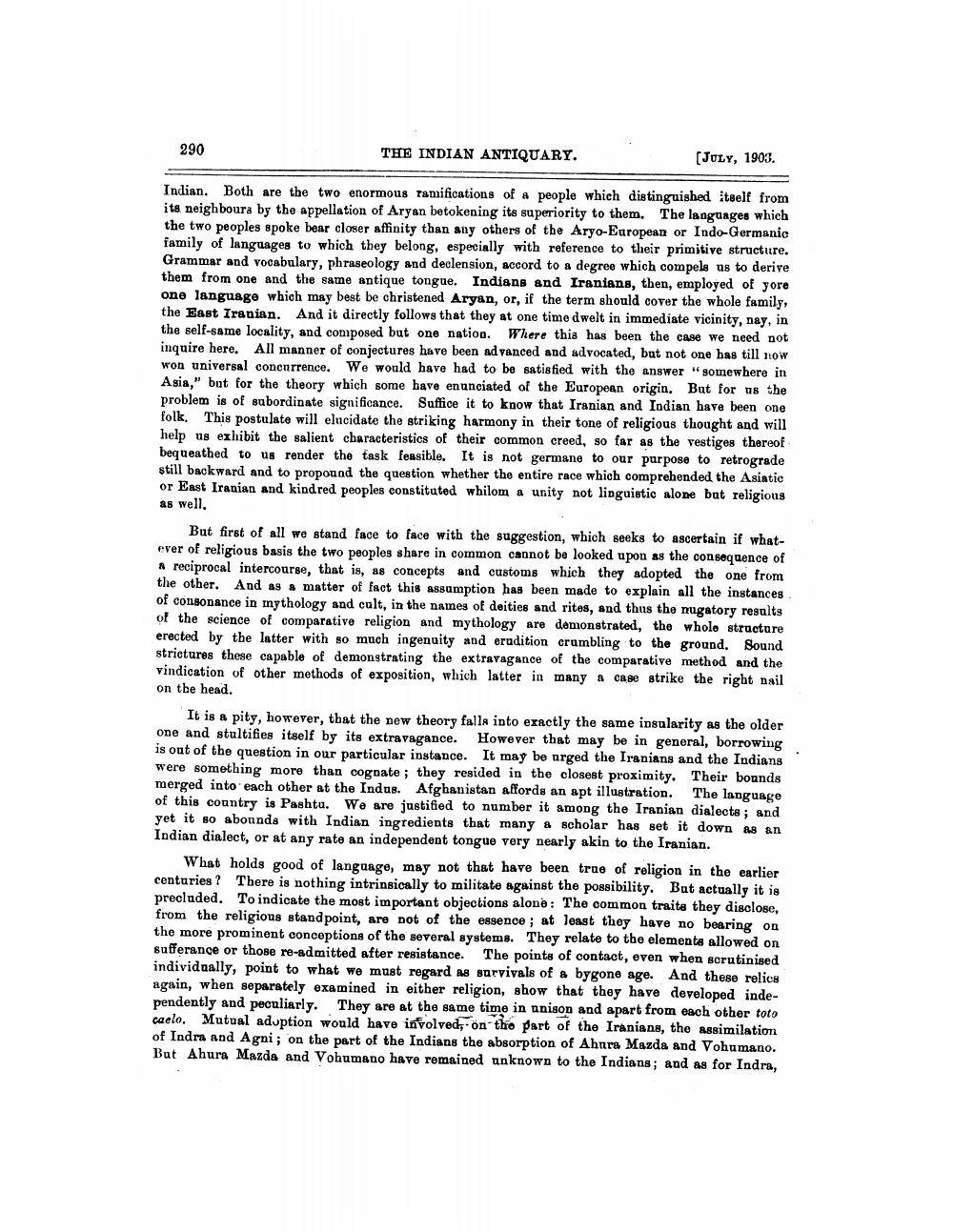________________
THE INDIAN ANTIQUARY.
Indian. Both are the two enormous ramifications of a people which distinguished itself from its neighbours by the appellation of Aryan betokening its superiority to them. The languages which the two peoples spoke bear closer affinity than any others of the Aryo-European or Indo-Germanic family of languages to which they belong, especially with reference to their primitive structure. Grammar and vocabulary, phraseology and declension, accord to a degree which compels us to derive them from one and the same antique tongue. Indians and Iranians, then, employed of yore one language which may best be christened Aryan, or, if the term should cover the whole family, the East Iranian. And it directly follows that they at one time dwelt in immediate vicinity, nay, in the self-same locality, and composed but one nation. Where this has been the case we need not inquire here. All manner of conjectures have been advanced and advocated, but not one has till now won universal concurrence. We would have had to be satisfied with the answer "somewhere in Asia," but for the theory which some have enunciated of the European origin. But for us the problem is of subordinate significance. Suffice it to know that Iranian and Indian have been one folk. This postulate will elucidate the striking harmony in their tone of religious thought and will help us exhibit the salient characteristics of their common creed, so far as the vestiges thereof bequeathed to us render the task feasible. It is not germane to our purpose to retrograde still backward and to propound the question whether the entire race which comprehended the Asiatic or East Iranian and kindred peoples constituted whilom a unity not linguistic alone but religious as well.
290
[JULY, 1903.
But first of all we stand face to face with the suggestion, which seeks to ascertain if whatever of religious basis the two peoples share in common cannot be looked upon as the consequence of a reciprocal intercourse, that is, as concepts and customs which they adopted the one from the other. And as a matter of fact this assumption has been made to explain all the instances. of consonance in mythology and cult, in the names of deities and rites, and thus the mugatory results of the science of comparative religion and mythology are demonstrated, the whole structure erected by the latter with so much ingenuity and erudition crumbling to the ground. Sound strictures these capable of demonstrating the extravagance of the comparative method and the vindication of other methods of exposition, which latter in many a case strike the right nail on the head.
It is a pity, however, that the new theory falls into exactly the same insularity as the older one and stultifies itself by its extravagance. However that may be in general, borrowing is out of the question in our particular instance. It may be urged the Iranians and the Indians were something more than cognate; they resided in the closest proximity. Their bounds merged into each other at the Indus. Afghanistan affords an apt illustration. The language of this country is Pashtu. We are justified to number it among the Iranian dialects; and yet it so abounds with Indian ingredients that many a scholar has set it down as an Indian dialect, or at any rate an independent tongue very nearly akin to the Iranian.
What holds good of language, may not that have been true of religion in the earlier centuries? There is nothing intrinsically to militate against the possibility. But actually it is precluded. To indicate the most important objections alone: The common traits they disclose, from the religious standpoint, are not of the essence; at least they have no bearing on the more prominent conceptions of the several systems. They relate to the elements allowed on sufferance or those re-admitted after resistance. The points of contact, even when scrutinised individually, point to what we must regard as survivals of a bygone age. And these relics again, when separately examined in either religion, show that they have developed independently and peculiarly. They are at the same time in unison and apart from each other toto caelo. Mutual adoption would have involved, on the part of the Iranians, the assimilation of Indra and Agni; on the part of the Indians the absorption of Ahura Mazda and Vohumano. But Ahura Mazda and Vohumano have remained unknown to the Indians; and as for Indra,




